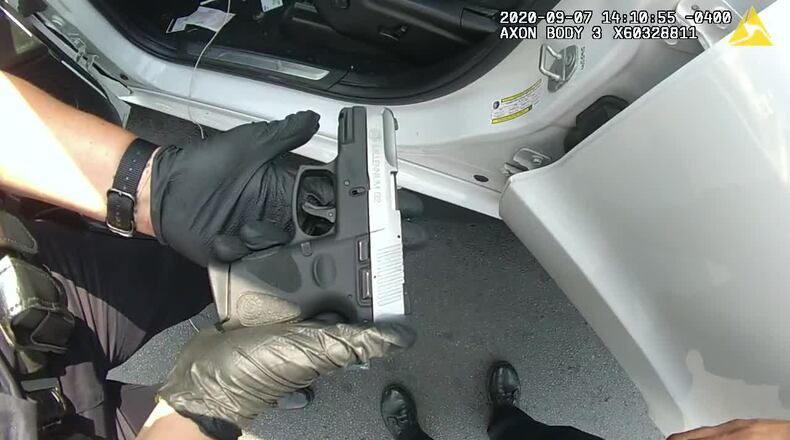The provision was never vetted in public. Instead, it was folded into House Bill 315 in the early hours of Thursday morning via a private conference committee among a handful of lawmakers. It subsequently passed as the 135th General Assembly’s final act.
The provision is intended to help departments recoup the actual costs — namely, the time it takes to review, obscure and redact videos — associated with video public records requests, but it’s ultimately a law that could cost Ohio citizens and journalists hundreds of dollars to receive police body cams or cruiser videos that are a regular tool in both holding police accountable and publicly defending their decisions.
When asked about the law during a Friday press conference, DeWine said, “I’m going to look at that. I’m not going to announce anything today.”
He explained that he wants these public records requests to be honored, but noted that processing videos are burdensome for police departments, especially for those with limited personnel.
Support
Ohio Fraternal Order of Police President Jay McDonald, who serves as chief of the Marion Police Department, told this outlet Friday that his union wasn’t involved in getting the provision into H.B. 315, but he could see why lawmakers are trying to address it.
McDonald boiled the problem down to “commercial requestors.”
Each week, he explained, the Marion Police Department gets a weekly records request from a private company that runs a handful of YouTube channels. The channel requests all police reports produced that week, finds the more dramatic reports, and then requests the relevant body cam footage.
“They want videos of people who resist arrest, videos (of people) who are drunk drivers, videos that they think people want to see on T.V.,” McDonald said. “And then, they turn around and then they monetize those public records by putting them on YouTube and generating clicks.”
McDonald said he’s not sure if commercial requestors are the specific targets of the provision, but he’d understand it.
“They are using government resources to generate profit based off of public records,” McDonald said. “There is that part of the equation that I don’t think gets talked about.”
Opposition
Opposition to the change has mounted in the days following its passage — largely because there was no prior notice of its consideration.
The Ohio News Media Association (ONMA) — which this news organization is a member of — is asking DeWine to exercise his line-item veto power over the provision.
Monica Nieporte, president of the association, wrote that the law will have “a chilling effect on our members and the public being able to access public records” and noted that the ONMA had no opportunity to testify to lawmakers due to the sudden and private nature of its consideration.
Jack Greiner, a Cincinnati-based attorney on media law and First Amendment matters, told this outlet that the change disrupts 30 years of public record law in Ohio.
“It’s a pretty major change, and to do it without any hearings or discussion or anything is, I think, problematic,” Greiner said.
Real impact
This news outlet regularly requests body cam or cruiser footage from local and state police departments.
For example, the Dayton Daily News earlier this year requested and obtained footage of police interaction with an off-duty Miami Twp. police lieutenant who was accused of pointing his weapon at a group of people setting off fireworks in Perry Twp. The lieutenant faced 16 counts of aggravated menacing and one count of handling a weapon while intoxicated.
This outlet’s public records request elicited a video that was nearly an hour and a half long. Under the provision in H.B. 315, an Ohioan could be charged over $100 to receive such a video.
For more stories like this, sign up for our Ohio Politics newsletter. It’s free, curated, and delivered straight to your inbox every Thursday evening.
Avery Kreemer can be reached at 614-981-1422, on X, via email, or you can drop him a comment/tip with the survey below.
About the Author

